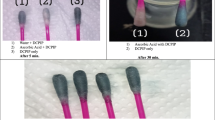Abstract
The effect of prefeeding dehydrated amaranth leaves (AL), at 10 and 20% levels on hexachlorocyclohexane (HCH)-induced free radical stress in rat liver was evaluated. The HCH-induced raise in malonadialdehyde (MDA), conjugated dienes and hydroperoxides was diminished by AL. The effect of AL was highly effective with respect to reduction in these cytotoxic products, especially at 20% level. AL intake resulted in a significant increase in hepatic vitamin A and glutathione (GSH). However, the AL consumption reduced hepatic tocopherols. Feeding of AL at 10%level increased the hepatic glucose-6-phosphate dehydrogenase (G-6-PDH) activity while that at 20% level increased the hepatic glutathione reductase (GSSGR) as well, in addition to G-6-PDH. Amaranth leaves at 10 and 20% levels of feeding reduced the hepatic superoxide dismutase and glutathione peroxidase (GSH-Px) activities. The pre-feeding of AL resulted in the reversal of HCH-induced alteration in GSH-Px and G-6-PDH activities. The significant reduction in the level of glutathione S-transferase brought about by HCH was restored to control level by feeding 20% AL. It is concluded that the consumption of AL at 20% level produces reduction in the HCH-induced impairment of antioxidant status in rat liver.



Similar content being viewed by others
References
Dianzani MU, Ugazio U (1978) Lipid Peroxidation In: TF Slates (eds), Biochemical Mechanisms of Liver Injury. London: Academic Press, pp 669.
Chadwick RW, Freal JJ (1972) Comparative acceleration of lindane metabolism to chlorophenols by pretreatment of rats with lindane or with DDT and lindane. Food Cosmet Toxicol 10: 789–795.
Pelissier MA, Manchon PH, Atteba S, Albrecht R (1975) Quelques effects a moyen terme du lindane sur les enzymes microsonales du foie chez le rat. Food Cosmet Toxicol 13: 437– 440.
Goel MR, Shara MA, Stohs SJ (1988) Induction of lipid peroxidation by HCH, dialdrin, TCDD, CCl4 and HCB in rats. Bull Environ Contam and Toxicol 40: 255–262.
Agrawal D, Sultana P, Gupta GSD (1991) Oxidative damage and changes in the glutathione redox system in erythrocytes from rats treated with hexachlorocyclohexane. Food Chem Toxicol 29: 459–462.
Dwyer J (1993) Dietary fiber and colorectal cancer risk. Nutr Rev 51: 147–155.
Lupton JR, Steinbach G, Chang WC, O’Brien BC, Wiese S, Stoltzfus CL, Glober GA, Wargovitch MJ, McPherson RS, Winn R (1996) Calcium supplementation modifies the relative amounts of bile acids in bile and affects key aspects of human colon physiology. J Nutr 126: 1421–1428.
Cravo ML, Mason JB, Dayal Y, Hutchinson M, Smith Advances, Selhub J, Rosenberg IH (1992) Folate deficiency enhances the development of colonic neoplasia in dimethylhydrazine-treated rats. Cancer Res 52: 5002–5006.
Bronzetti G (1994) Antimutagens in food. Trends Food Sci Technol 5: 390–395.
Anilakumar KR, Khanum F, Sudarshana Krishna, KR, Santhanam K (2004) Effect of amaranth leaves on dimethyl hydrazine induced changes in multicomponent antioxidant system of rat liver. Ind J Exptl Biol 42: 595–600.
Zhang Y, Marcillat O, Giluvi C, Emstes L, Davis KJA (1990) The oxidative inactivation of mitochondria electron transport chain components and ATPase. J Biol Chem 265: 15330–16336.
Reed DJ (1989) Glutathione and vitamin E in protection against mutagens and carcinogens. In: Taylor IL and Scanlan RA (eds), Food Toxicology- A perspective on the relative risks. New York: Marcel Dekken Inc, pp 169.
Halliwell B, Murcia MA, Chirico S, Aruoma OI (1995) Free radicals and antioxidants in food and in vivo: what they do and how they work. Crit Rev Food Sci Nutr 35: 7–20.
Buege JA, Aust S D (1978) Microsomal lipid peroxidation. Methods Enzymol 52: 306–310.
Mair RD, Hall RT (1971) In: Swern D (ed), Organic Peroxides. New York: Wiley Intersciences, pp 535.
Roe JH, Keuther CA (1943) The determination of ascorbic acid in whole blood and urine through the 2, 4-DNPH derivative of dehydroascorbic acid. J Biol Chem 47: 399–407.
Ellman GL (1958) Liver glutathione-A colorimetric method for determining low concentrations of mercaptans. Arch Biochem Biophys 74: 443–450.
Dann WG, Evelyn (1938) The determination of vitamin A with the photoelectric colorimeter. Biochem J 32: 1008–1017.
Edisbury JR, Gillow J, Taylor RJ (1954) The determination of total tocopherols. Analyst 79: 617–623.
Weiss C, Maker HS, Lehrer GM (1980) Sensitive fluorometric assays for glutathione peroxidase and reductase. Anal Biochem 106: 512–516.
Habig WB, Pabst MJ, Jakoby W (1974) Glutathione S-transferases: the first enzymatic step in mercapturic acid formation. J Biol Chem 249: 7130–7139.
Balinsky D, Bernstein RE (1963) The purification and properties of glucose-6-phosphate dehydrogenase from human erythrocytes. Biochem Biophys Acta 67: 13–15.
Cohen G, Dembiec C, Marens J (1970) Measurement of catalase activity in tissue extracts. Anal Biochem 34: 30–38.
Flohe L, Otting F (1984) Superoxide assays. Methods Enzymol 105: 93–104.
Meister A, Tate SS, Griffith OW (1981) γ-glutamyl transpeptidase. Methods Enzymol 77: 237–253.
Lowry OH, Rosebrough NJ, Faro AL, Randall RJ (1951) Protein measurement with the Folin phenol reagent. J Biol Chem 193: 265–275.
Fisher RA, Yates F (1963) In: Olives and Boyd (eds), Statistical analysis for biological, agricultural and medical research, 6th edn., Edinburgh.
Halliwell B, Gutteridge JMC (1989) In: Free radicals in biology and medicine, 2nd edn. Oxford: Clarendon Press.
Palozza P (1998) Proxidant actions of carotenoids in biological systems. Nutr Rev 56: 257–265.
Tang G, Blanco MC, Fox JG, Russel RM (1995) Supplementing diets with canthaxanthin affects the tissue distributions of canthaxanthin, other carotenoids, vitamin A and vitamin E. J Nutr 125: 51–59.
Halliwell B (1997) Antioxidants and human disease. Nutr Rev 55: 544–552.
Anilakumar KR, Khanum F, Krishna KRS, Santhanam K (2003) Reduction of dimethyl hydrazine-induced cytotoxicity by mango fruit bar: Changes in antioxidant enzymes in rats. Plant Foods Human Nutr 58: 1–11.
Uany R, Solomons S (2005) Diet, Nutrition and life-course approach to cancer prevention. J Nutr 135: 2935S–2945S.
Author information
Authors and Affiliations
Corresponding author
Rights and permissions
About this article
Cite this article
ANILAKUMAR, K.R., KHANUM, F. & SANTHANAM, K. Amelioration of Hexachlorocyclohexane-Induced Oxidative Stress by Amaranth Leaves in Rats. Plant Foods Hum Nutr 61, 169–173 (2006). https://doi.org/10.1007/s11130-006-0027-3
Published:
Issue Date:
DOI: https://doi.org/10.1007/s11130-006-0027-3




